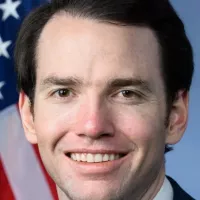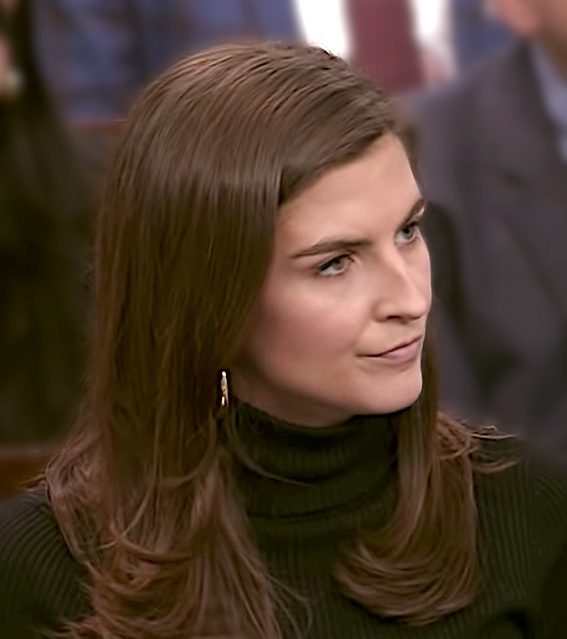Stanford University, officially Leland Stanford Junior University, is a private research university located in Stanford, California. Founded in 1885 by Leland Stanford and his wife, Jane, it was established in memory of their son, Leland Jr. It is renowned for its academic strength, particularly in technology, science, and entrepreneurship. Situated in the heart of Silicon Valley, Stanford has strong ties to the tech industry and is a leading institution for research and innovation. Its graduates have founded numerous successful companies, contributing significantly to technological advancements and economic growth. Stanford is also known for its beautiful campus and competitive admissions.
1906: San Francisco Earthquake Damages Campus
In 1906, Stanford University's campus suffered significant damage as a result of the San Francisco earthquake, causing financial strain.
1906: San Francisco Earthquake Causes Major Damage
In 1906, the San Francisco earthquake caused major damage to Stanford University, leading to the demolition of a new library and gymnasium, and the irreparable loss of original features in Memorial Church and the Quad.
1908: Stanford University School of Medicine Established
In 1908, Stanford University School of Medicine was established through the acquisition of Cooper Medical College in San Francisco.
1908: Law department transitions into professional law school
Starting in 1908, Stanford's law department transitioned from an undergraduate curriculum into a professional law school.
1917: Construction of the Thomas Welton Stanford Gallery
In 1917, the Thomas Welton Stanford Gallery was built to serve as a teaching resource for the Department of Art & Art History and as an exhibition venue.
1919: Hoover Institution on War, Revolution and Peace Started
In 1919, The Hoover Institution on War, Revolution and Peace was started by Herbert Hoover to preserve artifacts related to World War I.
1919: Lou Henry Hoover House
The 1919 Lou Henry Hoover House is listed on the National Register of Historic Places.
1923: Law School Accreditation
In 1923, Stanford's law school received accreditation from the American Bar Association.
1925: Stanford Graduate School of Business Founded
In 1925, the Stanford Graduate School of Business was founded at the urging of Herbert Hoover.
1930: Adoption of the Indian Mascot in 1930
In 1930, Stanford's sports teams were known as the Indians.
1937: Hanna-Honeycomb House
Frank Lloyd Wright's 1937 Hanna–Honeycomb House is listed on the National Register of Historic Places.
1944: Sororities Banned
In 1944, University President Donald Tresidder banned all Stanford sororities due to extreme competition.
1947: KZSU Radio Station Founded
In 1947, KZSU Stanford 90.1 FM, the student-run radio station, started as an AM radio station.
1949: Wallace Sterling Becomes President
In 1949, Wallace Sterling became the President of Stanford University.
1949: White Memorial Fountain
White Memorial Fountain is a memorial for two brothers in the class of 1949, William White and John White II.
1951: Prince Lightfoot as Official Mascot from 1951
From 1951, Prince Lightfoot (portrayed by Timm Williams, a member of the Yurok tribe) was the official mascot.
1951: Stanford Research Park Established
In 1951, Stanford Research Park was established in Palo Alto, marking it as the world's first university research park.
1952: White Memorial Fountain
White Memorial Fountain is a memorial for two brothers, one of whom died shortly after in 1952.
1956: William Shockley Nobel Prize
In 1956, William Shockley, co-inventor of the silicon transistor, received the Nobel Prize for Physics.
1959: School of Medicine moves to Stanford campus
In 1959, the Stanford University School of Medicine relocated to the Stanford campus.
1962: SLAC National Accelerator Laboratory Established
In 1962, the SLAC National Accelerator Laboratory was established to perform research in particle physics.
1964: White Memorial Fountain Installed
White Memorial Fountain (also known as "The Claw") was installed in 1964 and designed by Aristides Demetrios.
1968: Wallace Sterling Leaves Presidency
In 1968, Wallace Sterling's tenure as President of Stanford ended, during which he oversaw the growth of the university.
1969: Installation of Mobile Homes at Manzanita Park in 1969
In 1969, 118 mobile homes were installed as "temporary" housing at Manzanita Park.
1970: Establishment of Columbae
In 1970, Columbae was established as a "theme" house at Stanford, focusing on Social Change Through Nonviolence.
1971: Stanford Prison Experiment
In 1971, the Stanford prison experiment was criticized as unethical.
1972: Official Nickname Change to Cardinal in 1972
From 1972, Stanford's official nickname was the Cardinal, but there was ongoing debate about the mascot and team name.
1972: Removal of Indian Mascot in 1972
In 1972, Native American students and staff successfully lobbied University President Richard Lyman to abolish the "Indian" name and mascot, perceived as offensive. The teams reverted unofficially to the name "Cardinal".
1972: Removal of the Indian Symbol and Name in 1972
In 1972, President Richard Lyman dropped the Indian symbol and name after objections from Native American students and a vote by the student senate.
1972: Establishment of Synergy
In 1972, Synergy was established as a "theme" house at Stanford, focusing on Exploring Alternatives.
1973: Phi Sigma Fraternity Became a Self-Op in 1973
In 1973, Phi Sigma, formerly Phi Sigma Kappa fraternity, at 1018 Campus Drive, transitioned into a Self-Op.
1974: Murder of Arlis Perry
In 1974, Arlis Perry was murdered in Stanford Memorial Church; the case was not solved until 2018.
1975: Student Referendum Against Restoring the Indian in 1975
A 1975 student referendum at Stanford was against restoring the Indian as the mascot. The 1975 vote included new mascot suggestions, many alluding to the industry of Leland Stanford, the school's founder.
1976: Consecutive NCAA Team Championship Years Begin
In 1976, Stanford began a streak of winning at least one NCAA team championship each academic year, a streak that lasted for 48 consecutive years.
1976: Fire Protection Contract with Palo Alto Fire Department
Since 1976, fire protection has been provided by contract with the Palo Alto Fire Department.
1977: Sorority Ban Lifted
In 1977, following Title IX, the Board of Trustees lifted the 33-year ban on sororities.
1978: Theodore Streleski Murder
In 1978, Theodore Streleski murdered his faculty advisor.
1981: Misuse of Government Funds
In 1981, the misuse of government funds resulted in severe penalties for the school's research funding.
1981: Debate over Mascot and Team Name Until 1981
Until 1981, there was debate among students and administrators concerning what the mascot and team name should be.
1987: The Stanford Review Founded
In 1987, The Stanford Review, a conservative student newspaper, was founded.
1988: The Thinker granted residence at Stanford
In 1988, an original bronze cast of Auguste Rodin's "The Thinker" was granted residence at Stanford by art collector B. Gerald Cantor, with the university expected to attain full ownership sometime in the future.
1991: Installation of Mobile Homes at Manzanita Park until 1991
Until 1991, 118 mobile homes were installed as "temporary" housing at Manzanita Park.
1992: President Donald Kennedy Resigns
In 1992, President Donald Kennedy resigned due to the misuse of government funds.
1994: NACDA Directors' Cup Awarded
Beginning in 1994, Stanford was awarded the NACDA Directors' Cup for 25 consecutive years.
1995: Founding of the Stanford Encyclopedia of Philosophy
In 1995, Edward Zalta, a senior researcher at Stanford, founded the Stanford Encyclopedia of Philosophy, a leading online academic resource on philosophy.
1995: NACDA Directors' Cups Begin
In 1995, Stanford began a streak of winning 25 consecutive NACDA Directors' Cups, awarded annually to the most successful overall college sports program in the nation.
2003: Stanford Ranked Second in the World by ARWU in 2003
From 2003, the Academic Ranking of World Universities (ARWU) ranked Stanford second in the world (after Harvard).
2006: Stanford Receives 4.5 Billion
In 2006, Stanford received $4.5 billion.
2008: Land Use
As of 2008, 60% of Stanford's land remained undeveloped.
2010: Percentage of First-Generation Students in 2010
In 2010, 15% of undergraduates were first-generation students.
2012: Lake Lagunita Condition
As of 2012, Lake Lagunita was often dry and the university had no plans to artificially fill it.
2012: Need-Based Financial Aid Awarded
In 2012, Stanford awarded $126 million in need-based financial aid to 3,485 students, with an average aid package of $40,460.
2012: Relationship Between Clougherty and Lonsdale
In the spring of 2012, Elise Clougherty and Joe Lonsdale entered into a relationship when she was a junior and he was her mentor in a Stanford entrepreneurship course.
2013: Clougherty Files Charges Against Lonsdale
By the spring of 2013, Elise Clougherty had broken off the relationship with Joe Lonsdale and filed charges at Stanford that Lonsdale had broken the Stanford policy against consensual relationships between students and faculty and that he had sexually assaulted and harassed her.
2013: Stanford Named "Dream College" in 2013
From 2013, polls of college applicants done by The Princeton Review showed that Stanford was the most commonly named "dream college" for students.
2013: On-Campus Housing in 2013
In 2013, 89% of undergraduate students lived in on-campus university housing at Stanford, where housing is guaranteed for all four years.
October 2014: Windhover Contemplation Center Dedicated
In October 2014, the Windhover Contemplation Center was dedicated, providing a spiritual sanctuary for students and staff. The center displays the "Windhover" paintings by Nathan Oliveira.
2014: Stanford University Libraries in 2014
By 2014, Stanford University Libraries (SUL) comprised twenty-four libraries, including the Hoover Institution Library and Archives, a research center focused on 20th-century history. SUL held over 9.3 million volumes, nearly 300,000 rare books, 1.5 million e-books, 2.5 million audiovisual materials, 77,000 serials, and millions of microform and digital resources.
2014: Opening of the Anderson Collection
In 2014, Stanford opened the Anderson Collection, a new museum focused on postwar American art. This museum was founded through the donation of 121 works by food service moguls Mary and Harry Anderson.
2014: Reports of Rape Ranking
In 2014, Stanford was ranked tenth highest in the nation in "total of reports of rape" on their main campus, with 26 reports of rape.
2014: Campus Rape Reports
In 2014, a reporter from The Washington Post analyzed campus rape reports and found that Stanford was one of the top ten universities in campus rapes, with 26 reported that year.
February 2015: Elise Clougherty Files Lawsuit Against Joe Lonsdale
In February 2015, Elise Clougherty filed a sexual assault and harassment lawsuit against venture capitalist Joe Lonsdale.
2015: Graduate Student Population Living on Campus in 2015
By 2015, 55 percent of the graduate student population lived on campus. Stanford also subsidizes off-campus apartments for graduate students.
2015: Tuition Policy Changes
For undergraduates admitted starting in 2015, Stanford waives tuition, room, and board for most families with incomes below $65,000.
2015: Demolition of Meyer Library
In 2015, Meyer Library was demolished and Lathrop Library was established in its place, holding various student-accessible media resources and housing one of the largest East Asia collections with 540,000 volumes.
2015: Completion of Newer Dorms at Manzanita Park in 2015
In 2015, newer dorms Castano, Kimball, Lantana, and the Humanities House, were completed at the site of the mobile homes in Manzanita Park.
2015: Campus Climate Survey Results
In Stanford's 2015 Campus Climate Survey, 4.7 percent of female undergraduates reported experiencing sexual assault and 32.9 percent reported experiencing sexual misconduct.
2015: Sexual Assault by Brock Turner
On the night of January 17–18, 2015, Chanel Miller was sexually assaulted by Brock Turner. Two Stanford graduate students witnessed the attack and intervened.
March 2016: Brock Turner Conviction
In March 2016, Brock Turner was convicted on three felony charges for sexually assaulting Chanel Miller.
June 2016: Brock Turner Sentencing
In June 2016, Brock Turner received a jail sentence of six months and was declared a sex offender for sexually assaulting Chanel Miller.
2016: Oversight of Independent Laboratories
By 2016, the Office of the Vice Provost and Dean of Research oversaw eighteen independent laboratories, centers, and institutes.
2016: Sports at Stanford in 2016
In 2016, Stanford had sixteen male varsity sports and twenty female varsity sports, nineteen club sports, and about 27 intramural sports. The Stanford Tree is the Stanford Band's mascot and the unofficial mascot of Stanford University.
2016: Biohub Medical Science Research Center Founding
In 2016, Stanford, along with UC Berkeley and UC San Francisco, became part of the Biohub, a new medical science research center. This was founded with a $600 million commitment from Facebook CEO Mark Zuckerberg and pediatrician Priscilla Chan, aiming to design advanced-level healthcare units.
2016: Rio de Janeiro Olympics
In the 2016 Rio de Janeiro Olympics, Stanford-affiliated athletes won 27 medals.
2017: Graduation Rate for the Class of 2017
The four-year graduation rate for the class of 2017 cohort was 72.9%, and the six-year rate was 94.4%.
2018: NACDA Directors' Cups End
In 2018, Stanford's streak of winning 25 consecutive NACDA Directors' Cups, awarded annually to the most successful overall college sports program in the nation came to an end.
2018: Arlis Perry Murder Solved
In 2018, the 1974 murder of Arlis Perry in Stanford Memorial Church was solved.
2018: Degrees awarded in 2018-2019
In the 2018–2019 school year, Stanford awarded 1,819 undergraduate degrees, 2,393 master's degrees, 770 doctoral degrees, and 3270 professional degrees.
2019: Admission Decisions
As of 2019, Stanford considers extracurricular activities, talent/ability and character/personal qualities as 'very important' in making first-time, first-year admission decisions.
2019: Stanford Ranked 1st in Innovation in 2019
In 2019, Stanford University achieved the 1st place on Reuters' list of the World's Most Innovative Universities, marking its fifth consecutive year at the top.
2019: Stanford Enrollment Numbers for 2019-2020
Stanford enrolled 6,996 undergraduate and 10,253 graduate students in the 2019–2020 school year. Women made up 50.4% of undergraduates and 41.5% of graduate students.
2020: Tokyo Olympics
In the 2020 Tokyo Summer Olympics, Stanford-affiliated athletes won 26 medals, which was more than any other university.
2020: Stanford Enrollment Numbers for 2019-2020
Stanford enrolled 6,996 undergraduate and 10,253 graduate students in the 2019–2020 school year. Women made up 50.4% of undergraduates and 41.5% of graduate students.
2020: Stanford Named "Dream College" in 2020
Until 2020, polls of college applicants done by The Princeton Review showed that Stanford was the most commonly named "dream college" for students.
2021: Faculty Size
By 2021, Stanford University had 2,288 tenure-line faculty, senior fellows, center fellows, and medical faculty on staff.
2021: Faculty Senate Representatives
In 2021, the Faculty Senate was made up of 54 elected representatives of the faculty.
2021: Research Expenditure
Stanford's research expenditure in fiscal years of 2021/22 was $1.82 billion and the total number of sponsored projects was 7,900.
January 1, 2022: NCAA Individual Championships
As of January 1, 2022, Stanford athletes have won 529 NCAA individual championships. No other Division I school is within 100 of Stanford's total.
2022: Rhodes Scholars
By 2022, 128 Stanford students or alumni have been named Rhodes Scholars.
2022: Stanford Apologizes for Discriminating against Jewish Applicants
In 2022, Stanford issued its first institutional apology to the Jewish community after an internal task force confirmed that the university deliberately discriminated against Jewish applicants.
2022: Dual-Enrollment Computer Science Program Started
In 2022, Stanford started its first dual-enrollment computer science program for high school students from low-income communities.
2022: Stanford Ranked #1 by Washington Monthly in 2022
In 2022, Washington Monthly ranked Stanford at the 1st position in their annual list of top universities in the United States.
2022: Stanford Ranked as Top "Dream College" in 2022
In a 2022 survey by The Princeton Review, Stanford was ranked 1st among the top ten "dream colleges" of America, considered the ultimate "dream college" by both students and parents.
January 2023: Lake Lagunita Refilled by Heavy Rains
In January 2023, heavy rains refilled Lake Lagunita at Stanford to up to 8 feet of depth.
August 2023: Stanford's Endowment
As of August 2023, Stanford's endowment, including real estate and other investments, was valued at $36.5 billion.
September 2023: Richard Saller Becomes Interim President
In September 2023, Richard Saller became the interim president of Stanford University.
October 2023: Jenny Martinez Becomes Provost
In October 2023, Jenny Martinez became the fourteenth provost of Stanford University.
2023: Consecutive NCAA Team Championship Years End
In 2023, Stanford's streak of 48 consecutive years of winning at least one NCAA team championship each academic year came to an end.
2023: Accreditation Review
Stanford was accredited by the Western Association of Schools and Colleges with the latest review in 2023.
April 4, 2024: Jonathan Levin Appointed as Thirteenth President
On April 4, 2024, the board of trustees announced that Jonathan Levin would become the thirteenth president of Stanford University on August 1, 2024.
May 23, 2024: NCAA Team Championships
As of May 23, 2024, Stanford University has won 136 NCAA team championships, which is more than any other school.
August 1, 2024: Jonathan Levin Becomes President
Jonathan Levin will become the thirteenth president of Stanford University on August 1, 2024.
2024: Stanford's Ranking in The Wall Street Journal
As noted in The Wall Street Journal's 2024 rankings, Stanford is among the top universities, consistently jockeying for the leading positions.
2024: Top Rankings for Business and Law Schools in 2024
In 2024, Stanford Graduate School of Business was consistently ranked as the most selective and best business school by Bloomberg Businessweek and U.S. News & World Report. Additionally, Stanford Law School was ranked as one of the two most selective and best law schools, according to U.S. News & World Report.
2024: Stanford Ranked Second in the World by ARWU in 2024
Until 2024, the Academic Ranking of World Universities (ARWU) ranked Stanford second in the world (after Harvard).
2026: Class of 2026 Enrollment
Of those students accepted to Stanford's Class of 2026, 1,736 chose to attend, of which 21% were first-generation college students.
Mentioned in this timeline

Mark Zuckerberg is an American businessman and programmer best known...
Facebook is a social media and networking service created in...
The United States of America is a federal republic located...

San Francisco is a major commercial financial and cultural hub...

An earthquake is the shaking of the Earth's surface caused...

News encompasses information about current events disseminated through various media...
Trending

9 months ago Kevin Kiley faces constituent pressure, hosts virtual town hall after criticism.

2 months ago Rachel McAdams and Dylan O'Brien stranded in Sam Raimi's island horror-thriller Send Help.
16 days ago Winter Weather Advisory: Freezing Rain and Icy Roads Expected in North Carolina

2 months ago Kaitlan Collins Praises Karoline Leavitt; CNN to Host AOC and Sanders Town Hall

2 months ago Investors Await Jerome Powell's Analysis on Inflation and Jobs Impacting Wall Street.

6 months ago GOP Lawmakers Unveil 'Golden Dome' Defense Plan: Katie Britt's Role Highlighted
Popular

Candace Owens is an American conservative political commentator and author...

Ilhan Omar is an American politician currently serving as the...

XXXTentacion born Jahseh Dwayne Ricardo Onfroy was a controversial yet...

Tucker Carlson is an American conservative political commentator known for...

Charles James Charlie Kirk was a prominent American right-wing political...

Bill Gates an American businessman and philanthropist revolutionized personal computing...